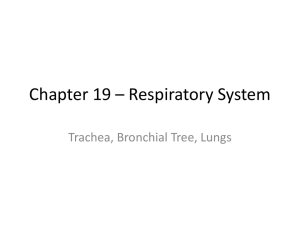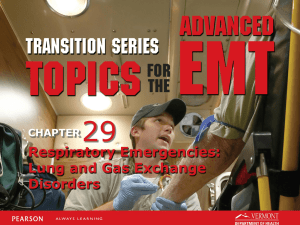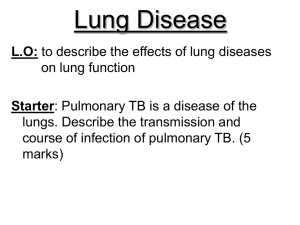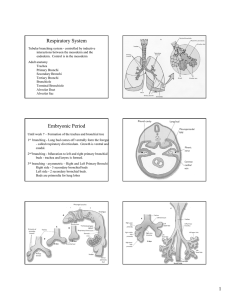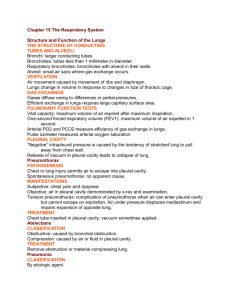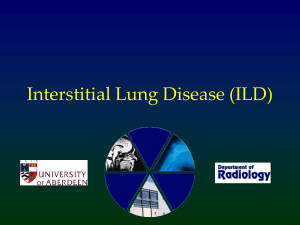Lung Pathology
advertisement
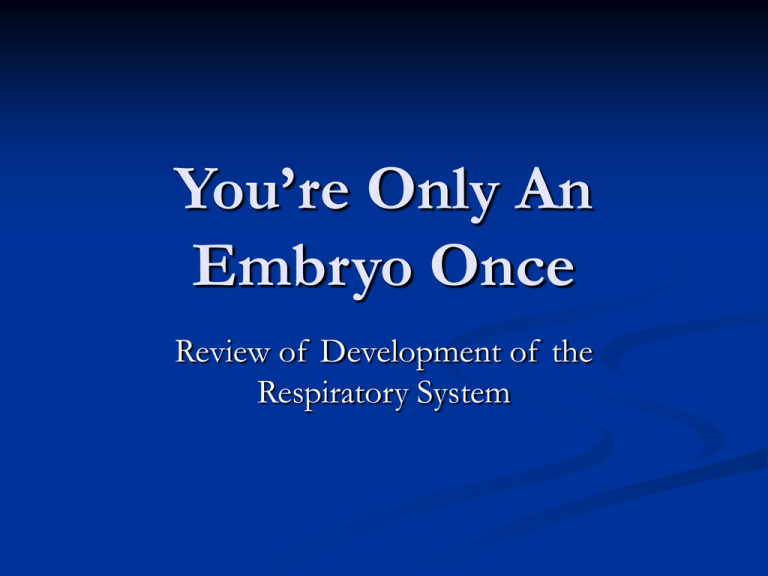
You’re Only An Embryo Once Review of Development of the Respiratory System Embryonic Stage 22 days to 6 weeks Day 22: Formation of a ventral outpouching from the endodermal foregut—respiratory diverticulum Grows ventrocaudally through mesenchyme around the foregut Days 26-28: First bifurcation—primary bronchial buds which give rise to the right and left lungs Proximal end of diverticulum forms the trachea and larynx Glottis forms at the original point of the diverticulum Embryonic Stage 22 days to 6 weeks 5th week: First round of branching Highly stereotypical: 3 secondary bronchial buds on right, 2 on left Secondary bronchial buds give rise to the lung lobes Pseudoglandular Stage 6 to 16 weeks During 6th week: more variable round of branching leading to 10 tertiary bronchi Tertiary bronchi become the bronchopulmonary segments By week 16: 14 successive branchings have occurred producing the terminal bronchioles Canalicular Stage 16 to 28 weeks Each terminal bronchiole divides into 2 or more respiratory bronchioles These branches progress in a craniocaudal direction Mesodermal tissue surrounding these structures become highly vascularized, presumably via angiogenesis Blood vessels begin to come closely apposed to lung epithelium Lung epithelium begins to differentiate into specialized cell types Saccular Stage 28 to 36 weeks By week 36, the first formed terminal branches are invested in a rich capillary network forming terminal sacs or primitive alveoli Only about 5% to 20% of all terminal sacs are formed before birth Terminal sacs continue to be formed well into childhood Form and differentiate in craniocaudal progression Process mostly complete by age 2 years Alveolar Stage 36 weeks to Term (and beyond) Continued maturation of terminal sacs into mature alveoli Septation is the process in which alveoli are further subdivided occurs after birth About 20 to 70 million terminal sacs in each lung before birth, 300 to 400 million alveoli in each mature lung Each septum contains smooth muscle and capillaries Additional Considerations Lung a composite of endodermal and mesodermal tissues Implications for inflammation, repair, and neoplasia Clinical Correlation Developmental Abnormalities Pulmonary hypoplasia or agenesis Tracheoesophageal fistula and esophageal atresia Foregut cysts Pulmonary sequestrations Clinical Correlation Neonatal Respiratory Distress Syndrome Immaturity of the lungs Deficiency of pulmonary surfactant Research Issues Approaches for Studying Lung Development Organ Culture Transgenic and Gene-Targeting Techniques Engineered loss-of-function mutations (knock-outs) and gain-of-function transgene mutations Identification of important transcription factors Models of human pulmonary disease Molecular and Cellular Models Demonstrate that branching morphogenesis is regulated by reciprocal interaction between the endoderm and mesoderm Components of ECM and growth factors and their receptors Expression in cell-specific and time-specific contexts Genes regulating differentiation of specialized cell types


